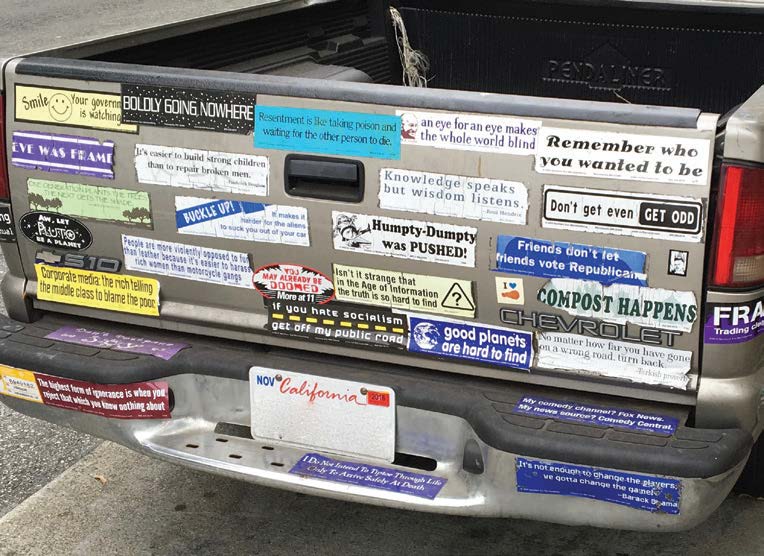Whether it’s a stick figure family, a stick figure family being eaten by a Tyrannosaurus Rex, “My child is an honor roll student” or “My miniature schnauzer is smarter than your honor roll student,” people love getting cheeky with their bumper stickers. But what are the origins of these mobile signifiers?
Many credit Forest P. Gill, a silkscreen printer in Kansas City, Kansas, as the creator — it was he who realized the advertising potential of self-adhesive paper. Before stickers on car bumpers was the norm, advertisers put business names on signs, wheel covers and horsefly nets. When bumper stickers caught on, early versions promoted tourist attractions like Marine Gardens in Florida, Meramec Caverns in Missouri and Rock City Gardens in Tennessee. In the 1940s and 1950s, visitors to Rock City wound up with a “See Rock City” bumper sticker, thanks to staffers who roamed the parking lot and applied one to every car.
The first known presidential campaign sticker appeared in 1952’s race between Dwight Eisenhower and Adlai Stevenson. No matter what message drivers are sending, one commonality seems prevalent: road rage. Colorado State University social psychologist William Szlemko found a link between aggressive driving and the number of stickers on the person’s car, regardless of the messages displayed.

Kasia Pawlowska loves words. A native of Poland, Kasia moved to the States when she was seven. The San Francisco State University creative writing graduate went on to write for publications like the San Francisco Bay Guardian and KQED Arts among others prior to joining the Marin Magazine staff. Topics Kasia has covered include travel, trends, mushroom hunting, an award-winning series on social media addiction and loads of other random things. When she’s not busy blogging or researching and writing articles, she’s either at home writing postcards and reading or going to shows. Recently, Kasia has been trying to branch out and diversify, ie: use different emojis. Her quest for the perfect chip is never-ending.


